#cel journals
Text
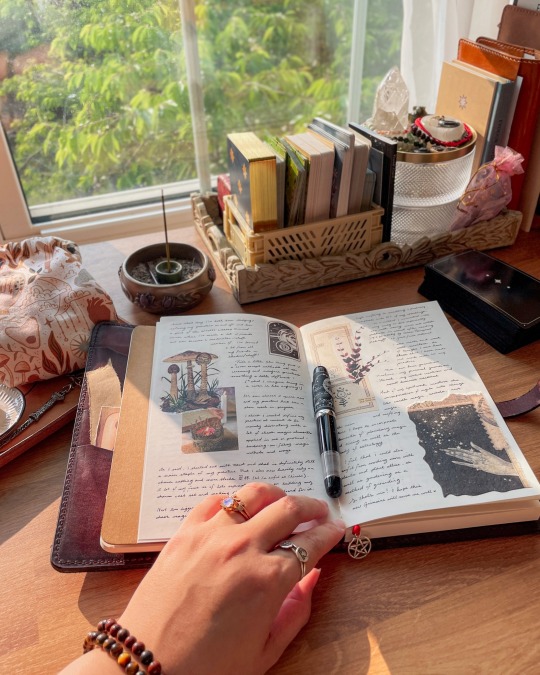

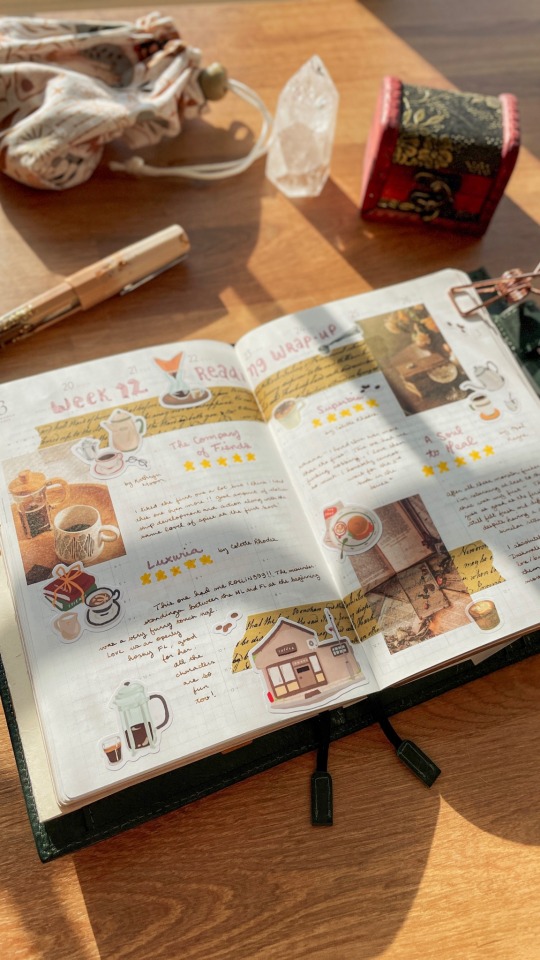
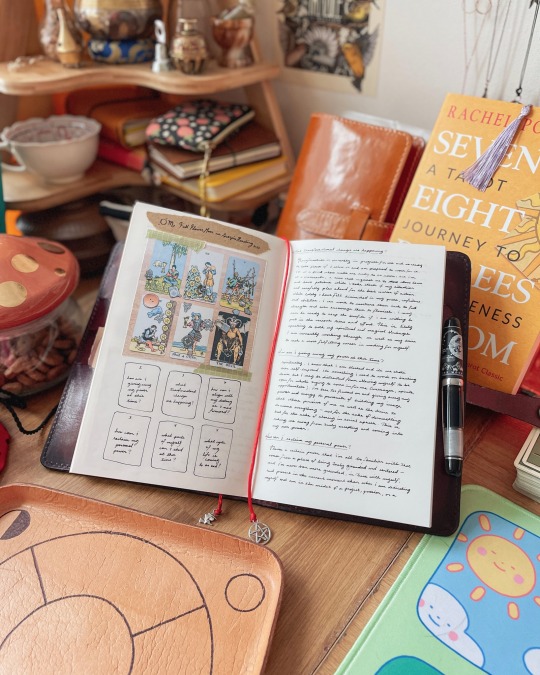


It’s August which means I’m obsessed with all of my pens and journals again 🤌🖋️
#journaling#journal#fountain pen#commonplace book#grimoire#bullet journal#tarot journal#tarot#cel journals#cel does hot witch shit#celerydays
999 notes
·
View notes
Text
Podsumowanie postanowień noworocznych 2023 - 17/21
Używki:
1. Być wolną od nałogu. ❌
2. Nie brać leków rekreacyjnie! Ani nadużywać tłumacząc się, że potrzebuję i chuj. ✔️ (rok temu brałam dzień w dzień i o tej porze byłam na morfinie)
Terapia/praca nad sobą:
1. Znaleźć odpowiedniego terapeutę i sumiennie chodzić na wszystkie sesje. ✔️
2. Przypominać sobie co już wiem, dalej wprowadzać w życie, utrwalać, pracować nad tym czego nie udało mi się przyswoić, odkrywać nowe, mieć się na baczności, lecz z odpowiednią dozą wyrozumiałości. ✔️
3. Próbować na wszelkie sposoby (jak coś jest głupie, ale działa, to nie jest głupie).✔️
4. Nie spuszczać z oczu celu i doceniać nawet najmniejszy progres. ✔️
5. Nie czekać do ostatniej chwili, szukać pomocy wcześniej, informować o tym, w razie potrzeby zaangażować psychiatrę. ✔️
6. Z całych sił się starać by moje zaburzenia nie odbijały się na Dawidzie. ✔️
7. Nie kłamać/kłamać mniej. ✔️
8. Odpuścić perfekcjonizm i nastawienie „wszystko albo nic”, większość rzeczy robić na 40-70%. ✔️
Zawodowe/uprawnienia:
1. Dogadać pracę u Michała albo szukać innej. ✔️
2. Zacząć robić C ✔️
3. Kontynuować nurkowanie i zrobić specjalizacje z ratownictwa. ❌
Pozostałe:
1. Wyjechać na wakacje za granicę z Dawidem. ❌
2. Spędzać częściej aktywnie czas z Dawidem i pójść z nim na te jego ASG. ✔️
3. Szukać rozrywki w tym co naprawdę lubię, a co olewam. ✔️
4. Nieco bardziej zadbać o swój wizerunek. ✔️
5. Spełnić zachcianki, które odkładam od lat. ✔️
6. Dbać również o zdrowie fizyczne. ✔️
7. Wytrwać w pisaniu dzienników (nawet choćby miały być chujowe). ✔️
8. Utrzymywać porządek (nie zaniedbać zwłaszcza łazienki i kuchnii). ✔️
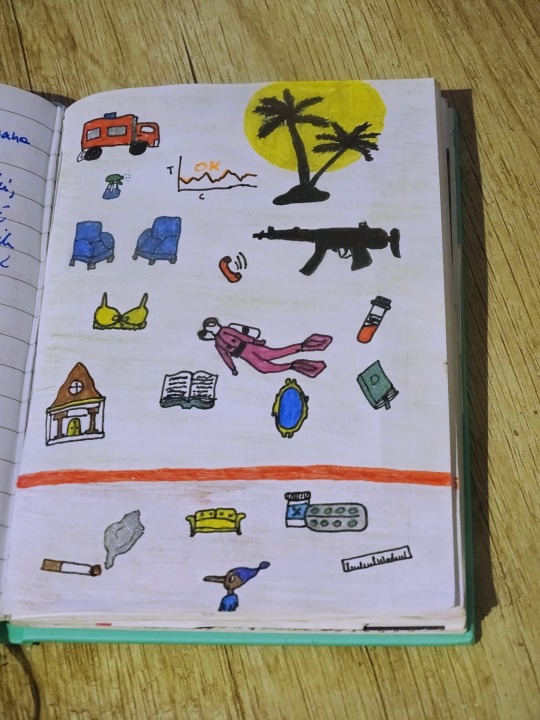


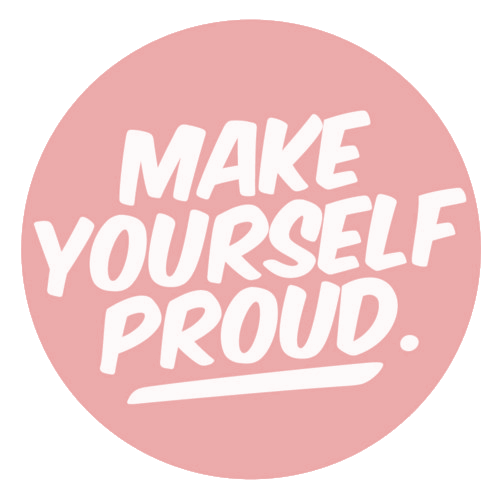


#podsumowanie#sport#addiction recovery#resolution#new years resolution#2023 resolution#postanowienia#postanowienia noworoczne#goal#goals#cel#cele#resolution summary#year summary#bullet journal#journal#asg#therapy#terapia#health#zdrowie#zaburzenia psychiczne#schizofrenia#depresja#depression#perfekcjonizm#perfection#perfectionism#love#holiday
63 notes
·
View notes
Text
Might get to meet Don Bluth next month???!!
#ahhhhhhh#AHHHHHH#jackal's journal#he's coming to a local con#and I have an All Dogs go to Heaven cel I want him to sign
60 notes
·
View notes
Text
I’ve been goin thru a steven universe rewatch since last week and… wow. Wow this show is revolutionary for queer voices. It was eye opening seeing everything unfold again.
It’s been wonderful experiencing the show with fresh eyes. I started the show, saw the premiere of the show, followed it and finished it while I was still closeted and bigoted. I saw the reveal of Garnet being a fusion, being love, and was initially disgusted and disappointed because I was TAUGHT to be disgusted and disappointed.
The residual bigotry flares up at times… but it’s not me anymore. Well it is, but it’s like.. the MEMORY of me seeing that moment through my old eyes. I do my best to not feel shame, but to understand and forgive myself and enjoy creating a new experience watching SU.
now that I’m (somewhat) open, I’ve been able to enjoy the show and appreciate how much it’s done for queer voices since. I… saw Ruby and Sapphire’s wedding for the first time, I saw it— not with my hands barely covering my eyes. What a triumph that this show inspired others to let queer ppl share their stories, experiences, hopes, fears, love, without shame! Steven Universe isn’t perfection— it’s flawed, beautifully flawed, like the people who made it, the people who watch it, and the characters in it. If the road it paved wasn’t perfect, then all the better for newer voices, newer stories to be like, that limestone thingy in roman rock to reinforce it. To make it better. to make like, longer gay roads! pff shit I think I was trying to be poetic and metaphorical or something, but I hope my point came across. I just have big feelings right now. I didn’t realize what SU did for this lil baby queer. It’s so inspiring
#I remeber all my old feelings watching the show#I remember my old rambles in my school journals and secret su art#i remember doing my best to not feel conflicted about Garnet and Pearl because I LOVED garnet and pearl#How I felt I had to combat being ‘deceived’ by the show#But really it’s just… Garnet and Pearl and all other allegories/ rep in the show isn’t trying to Convince me of anything#it just wants to exist. it fought yes but fought to be FREE to exist and share itself#shiiittt it’s so weird experiencing this show as an adult and critically watching it (bc when DONT i analyze shit lol) AND self soothing#tween/YA me#and again… I wish I had someone like me to talk about it :’)#if ur an ex-religious queer person reading this hmu 🤙🏼#cel speaks#i’m goin thru my buried su tag and i think my gen takes are still based lmao as in I still feel the same abt plot points as i did then#lololol#changed my mind abt amethyst BIG time tho younger Cel u were so dumb she be growin so much fr fr
16 notes
·
View notes
Text
'Can journalists be activists?' - Razia Bhatti Memorial Lecture 2023 - II

View On WordPress
#Activism#aman ki asha#Amber Shamsi#cel#democracy#ethics#eveninger#Herald#Human rights#IBA#Imran Aslam#journalism#kathy gannon#media responsibility#Newsline#Peace activism#Razia Bhatti#sapan news#Satire#social media#Southasia Peace#Star weekend#Umber Khairi#WAF#zohra yusuf
1 note
·
View note
Text
hi guysss
so who's ready for a really good cel's updates?
life is going really well at the moment
there was so much going on for a while but things have settled down now and i'm just so happy
i'm working on some projects with the most amazing people
like it genuinely gives me so much serotonin
ive been putting myself out there more socially, joining discord calls like i used to except on more calm servers and stuff
reconnecting with old friends too
and honestly, this is all a result of me fixing my sleep
it's wonderful to think that only a few weeks ago i was waking up at night ?!?! and now i fall asleep around 10 to 1am and wake up anywhere from 6 to 10am. like im really proud of myself and this is a big step for me because my sleep has never been this good. it's allowed me to help my family even more as well. like all of my relationships have been pretty enriched because i'm up at a good time and just have more time to spare where everyone's awake!
it's been a bit weird since i generally would only ring my boyfriend at night for the most part and now i'm trying to readjust things so we still get a lot of time together but i can still go to sleep earlier. i've been really content with the time we've been spending though and i think me waking up earlier also makes it easier for us to go on dates. i know it's also making it easier for him to focus on his routine and getting his sleep on track, although it's always been a lot better than mine hehe. so all in all, i think everyone's been feeling the benefits lately.
i genuinely do think the subliminals ive been listening to and the effort ive been making at manifesting has helped. something i just randomly said by chance while possibly being in the void state really helped me soooo 👀
i feel like besides the consistent sleeping, i don't really stick to a routine. i just kinda wake up and lay there for the most part. idk what to do and why i feel so weird and aimless when i know i have things to do. something felts halted and i need to journal about it and also set some goals and fix up my routines and stuff aaaah. discipline with sleep is good but need more with awake time too !!!!!
i think i'm just not used to being awake at these times it feels so weird but it's also an adjustment and that's okay
i need to reflect on who i want to be and whether or not i'm being her.
♡
#cel's intentions#lovelightdecadent challenge#happy#proud#progress#cel's updates#cel's takeaways#reflections#journalling
0 notes
Text
small bits of info on Turkic deities
Some of these I cant find tons of information on. So im going to compile them all here, I hope this information is useful to some people

Burkut -
She is a knowledgeable, elderly woman who lives in a cave atop a massive mountain someplace at the end of the earth. She rides the winds, causing storms and whirlwinds.
Szelanya also has a Slavic counterpart, a nymph with wind power who enjoys generating storms. She lives near hills, mountains, and tall mounds.
In Hungarian and Turkic folklore, she is also described as a feminine fairy-like spirit that dwells in the forest and occasionally in the skies.
Yel ana-
In Turkic mythology, the Yel İye are feminine fairy-like spirits that reside in the forest and occasionally in the skies. They were thought to be the spirits of women who had been frivolous in their lives and were now suspended between the physical world and the afterlife. They are frequently shown as lovely maidens, either nude or clad in shimmering gorgeous white costumes and extraordinary spectacular gowns.
According to legend, removing even one of Yel İyesi's hairs causes her to die or revert to her original form. A human can seize control of a Yel İyesi by taking a portion of her hair. If the hair is burned, the Yel İyesi disappears.
The Yel İye's magnificent voices create powerful winds that may carry houses into the air. Despite their feminine appearance, the Yel İye are ferocious warriors. The ground is reported to quake when they fight. They possess healing and prophetic abilities and are occasionally ready to assist humans.
Yel Ana, also known as Cel Ene, is the Turkic and Altai goddess of the wind. Also known as the Goddess of Guidance. She is the female version of Yel Iyesi. The name Yel Ene translates to 'Wind Mother. Szel Anya is known as the "queen of wind" in Hungarian mythology.[1] She's a clever woman. Szélanya (Wind Mother), an ancient woman, controls the wind.
Aisyt-
Ajyyhyt (Aysyt, Ajsyt, or Ajyhyt; Yakut: Айыыһыт) is a deity of the Yakut people from the Lena River area of Siberia. The name means "birthgiver," and she is sometimes referred to as the "mother of cradles."[1] Her full name is Айыыһыт Хотyн, which means "birth-giving nourishing mother".[Citation required] At each baby's birth, Aisyt brings the soul from heaven and registers it in the Golden Book of Fate. She is the daughter of Yer Tanrı.
Ajysyt was in charge of guiding a newborn child's soul to birth and was present at every birth. Women would channel Ajysyt, believing that it would reduce their agony during childbirth.[1] She maintained a gold journal where she chronicled each one. She is claimed to have lived on a mountaintop in a seven-story house,[1] from which she ruled the globe.
Yakut venerate a kind of ajyy (Yakut: Айыы). The principal manifestation, "Njelbey Ajyhyt," is responsible for childbirth. Djøhøgøj Tojon is responsible for horse reproduction, Ihegej Iejehsit for oxen, and Noruluya for dogs and foxes.
When referring to the deity responsible for the birth of male animals such as stallions or bulls, the term ajysyt is interpreted to mean masculine. However, when referring to the birth of a mare or cow, the term is feminine.
Su iyesi-
Su Iyesi (Tatar: Сy Иясе or Su İyäse; Chuvash: Шыв Ийҗ; Sakha: Уу Иччи; meaning "water master") is a water spirit in Turkic mythology. It is equivalent to the nymph in Turkic civilizations. The entity is disembodied and intangible, yet it may transform into a female being and become Yer Tanrı's daughter. Sometimes the master of water is represented as a bull.
When angry, it destroys dams, sweeps away water mills, and drowns humans and animals. It takes individuals down to her undersea home to serve her as slaves. In Tatar folk stories, this figure is also known as the Su Anası ("water mother"). In Turkic folklore, it dwells in ponds or rivers. There is no mention of a specific house, and the 'half-sunken log' is not visible. To go about, it rides a log.
Su Iyesi is sometimes linked to dangerous events like floods, storms, shipwrecks, and drownings. In some Turkic folk beliefs, she might be kind or beneficial while simultaneously causing rain.
It is thought that some potent Su Iyes, such as Su Dedesi, might induce illness. Water Disease, which he supposedly produced, manifests as watery bubbles in the human body. To get rid of salt, throw it into a river or fountain.
Su Ana ("water mother") is frequently referenced as the feminine equivalent of Su Iyesi. She is described as a nude young woman with a fairy-like face and yellow and long hair, which is generally coated in black fish scales. She has a fish tail and eyes that glow like fire. She generally rides around her river on a partially submerged log, generating loud splashes. Su Anası are believed to be responsible for local drowning incidents. She is the wife of Su Ata. She enjoys beaches and getting out of the water.
Od iyesi-
Od iyesi (Tatar: Ут Иясе or Ut İyäse; Chuvash: Вут Ийҗ; Sakha: Уoт Иччи) is the Turkic and Mongolian spirit or deity of fire. In Turkic languages, Od (or Ot) denotes fire, while Iye is the familiar spirit of any natural asset, literally meaning "master" or "possessor." Od iyesi shields the fire.
Od Ana is the Turkish and Mongolian goddess of fire. She is also known as the goddess of marriage. She is the feminine version of Od iyesi. The Altay name Ot Ene translates as "fire mother" (od "fire"; ene "mother"). In Mongolian tradition, she is known as the "Queen of Fire." She was claimed to have been born at the beginning of the world, when the earth and heaven divided, as the daughter of Yer Tanrı.
Some compare her to Umai, the mother deity of Turkic Siberians, who is shown with sixty golden tresses like sun rays. Umai is supposed to have been the same as Ot of the Mongols.
Tengri, the main deity, causes three flames to burn in the human spirit, which Od Ana hides and extinguishes on Earth. Today, Turkish people refer to this as "cemre," the fire that descends on Air, Earth, and Water each year.
Od Ata is the Mongolian and Turkic/Altai deity of fire. He is the male version of Od Iyesi. Od Ede translates to 'Fire Father' in the Altay language. He is known as the Od Khan, or "king of fire" in Mongolian tradition. Od Khan (or Odqan) is a fire spirit associated with Mongolian shamanism. He is typically characterised as a red-colored person riding a brown goat. His feminine counterpart is Yalun Eke (Yalın Eke), the 'fire mother' and Kayra's son.
Yer tanri-
Yer Tanrı is an Earth deity in Turkish and Altaic folk belief and mythology, also known as Yertengri or Certenger. It can signify wickedness, humanity, and sensual shapes. It remains in the backdrop, adjacent to the Gök Tengri. It is not often shown in human form. However, it is frequently viewed as a feminine entity. The Earth or World is referred to as "Yertinç / Yerdinç".
Tengri is offered a white chicken as a sacrifice. Sometimes fish, lambs, and oxen are sacrificed. Specifically, his head is buried in the earth. In some stories, weak and fragile children are buried by their parents, where they become stronger and emerge as heroic three days later.
Infertile ladies pray to Mother Earth beside a sacred tree. In fairy tales, Mother Earth breastfeeds the heroes once from her right breast and twice from her left breast, giving the heroic enormous power.
In Yakut heroic epics, the brave individuals who would be invincible in the future are fragile and helpless as children. Even their parents are unwilling to accept them. After being nourished by the Earth God (Yer Tanrı), these youngsters transform into legendary heroes after being buried in the dirt. This is still the meaning of shaking mad persons into wells in several Anatolian regions.
It is stated that there are no images of the earth deity. They sometimes refer to her as a white-haired woman who lives in the trunk of a great beech tree. The branches of this tree rise up to the sky, which is owned by the spirit who gives people the most beautiful horses as presents.
Yereh Khan is the family god of Turkish and Altaic mythology. The earth is an entity related to the notion of God. Protects the family and house. Because he like onions, a sacrificial vaccination is left for him with the onions. The term shares the same origin as the verb to settle. In Mongolian, yeröh means "wish." It lives in baskets made of tree bark that are placed behind doors.
The baskets built for him are also known as Yereh. Yereh Türkelli is the name given to these baskets that have been passed down seven generations. When young ladies marry, they take their baskets (guardian spirits) with them, and the notion of dowry is most likely founded on this tradition. He is prayed for to be healed of skin disorders. The term shares the same origin as the verb to settle. In Mongolian, yeröh means "wish."
Etugen eke-
Etügen Eke ("Mother Earth"), also known as Itügen or Etügen Ekhe, is an earth deity in Tengrism. She was said to be permanently virginal. "Etugen" refers to a lady and Kayra's daughter. Her name might be derived from Ötüken, an ancient Turkish goddess of fertility and the sacred mountain of the earth Etugen is occasionally paired with a male counterpart named Natigai or Nachigai (Natikai, Natıkay), however this is most likely a mistake due to Etugen's mispronunciation. In legend, Etugen is commonly shown as a young woman riding a grey bull.
Etugen existed in the centre of the universe. The Turkic people saw Etugen as a voluptuous, attractive woman who served as the patroness of the homeland and nature. All living things were subservient to her. As a result, the Turkic people regarded Etugen as the second highest divinity, behind Kök-Tengri. Tengri dominated the fate of individuals and nations, until natural forces gave way to Etugen. Etugen would occasionally punish people for their faults under Tengri's order.
But she was typically regarded as a beneficent Goddess. Every spring, offerings were performed to the goddess Etugen before the cattle-breeding season and agricultural sowing. Sacrifices were also carried out in the fall, once the harvest was over. During the Khaganate period,[8] sacrifices to Etugen were national in scope. They were carried out around rivers and lakeshores. A reddish horse was sacrificed in the name of livestock and crop fertility, as well as general well-being.
Kormos-
Kormos or Kormoz (Tuvan: кормоc; Turkish: Körmöz or Körmös) are Turkic mythological spirits, sometimes known as ghosts or devils. In Turkic languages, "kormos" implies "does not see" or "blind". The term can also denote "mentally ill".
Kormoses are wicked spirits from Turkic mythology that live in the underworld. Because a soul may transform into a Kormos after death, they are frequently linked to ancestor spirits. Other names for them include Alban, Chahik, Ozor, and others.
Ülgen commands the Angelic Kormoses, who assist and defend humanity. Erlik commands the demonic Kormoses [also known as "Sokor Körmös" (blind angels)], who frequently inhabit the underworld and attack humanity. The last Kormoses are neither good nor evil, and they walk the Earth in a sad state.
Souls transformed into Demonic Kormoses after death can escape the anguish and rise to Uçmag if the good in their core outweighs the evil.
They are all good and malevolent spirits. Körmös Khan is their chief.
Jaiyk-
Jaiyk, also known as Cayık or Jayık Khan, is the deity of rivers in Tengrism. He is a significant deity in traditional beliefs.
Jaiyk was originally referred to as Dayık in Altai mythology. He was initially the patron deity of humanity and the son of Kayra, but his religion eventually extended throughout Central Asian tribes. He was the god of rivers, water, and lake water.
Jaiyk is seen as a young guy holding a scourge in his hand. He lives at the confluence of seventeen rivers. Jaiyk possesses all of the power of water and can create storms on the water. If he becomes upset, he creates and causes floods on Earth. Jaiyk commands all of the rivers and lakes. He sends ghosts to every river. Every river or stream has an İye (protective spirit or divinity). The Tengrist conception of the deity appears to connect him with both the destructive and purifying properties of water.
According to old traditions and beliefs, water and rivers are sacred phenomena capable of purifying everything. People used to be required to respect the water in their homes and social settings. A protective spirit (familiar spirit) resides in the sea. If he is furious, he may be dangerous to people. Because of this rude behaviour, the water may go dry. As a result, Tengrist's literature and oral storytelling contain warning tales and stories of disrespect towards water. The Great Law of Genghis Khan (Yassa) prescribes severe punishments for anybody who pollutes water or rivers.
Alaz Kahn-
Alaz is the deity of fire in Turkish mythology. Also known as Alas-Batyr or Alaz Khan. He is a significant divinity in folk beliefs and the son of Kayra.
Alaz Khan is represented as an elderly guy holding a torch in his hand. He resides in Ulugh Od (Turkish: Uluğ Od, "Great Fire"). His garment is formed of flames, and Alaz Khan possesses the power of fire. When Alaz Khan grows enraged, he starts and spreads flames on Earth. Alaz Khan commands all of the hearths and stoves. He distributes spirits to every hearth. Every fire or hearth has an İye, which is a protective spirit or divinity. The Turkic notion of the deity appears to relate him with both the destructive and purifying properties of fire.
According to old Turkic traditions and beliefs, fire is a sacred phenomena that may purify everything, including spirits and souls. People are obligated to respect the fire in their families and social settings. According to popular belief, a protective spirit (familiar spirit) resides within fire. If it was furious, it might cause harm to humanity. Because of this rude behaviour, the fire may be quenched. As a result, Tengrist traditional oral traditions portrayed horrifying stories of disrespect to fire. The Great Law of Genghis Khan (Dead Law) imposed severe punishments on anybody who showed contempt to fire.
Bai Baianai-
Bai Baianai (Old Turkic: 𐰉𐰀𐰖 𐰉𐰀𐰖𐰀𐰣𐰀𐰖) is the Yakut spirit of forests, animals, and the patron of hunters. Hunters kindle fires and hope that their job will be fruitful and without incident. In certain traditions, she guards children. She is considered a lineage protector.
Baianai was the ancient Turkish goddess of animals, riches, and fertility. She was venerated over what is today known as Altai and Sakha. Her name translates as "rich, fertile, and wealthy". She was Kayra's daughter.
Baianai, a woods fairy or protective spirit, appears in Turkic-Altaic folklore and mythology. In Central Asia, she's known as Payna. There are three Baianas:
Bai Baianai, the Goddess of Hunting.
Tagh Baianai, the Goddess of Forests.
Ughu Baianai: Goddess of Fisheries
Baianai are frequently represented as ethereal maidens with long, flowing hair and, on occasion, wings. They are frequently clad in free-flowing dresses embellished with feathers that allow them to fly like birds. Baianai is typically depicted as a blonde, tall, slim woman with pale, bright complexion and blazing eyes. Baianais are thought to be extraordinarily attractive ladies with a strong affinity for fire. They have the ability to cause drought, burn a farmer's crops, or cause livestock to die from high fever. It is reported that when a Baianai becomes angry, she transforms into a monster bird capable of hurling fire at her foes.

sorry for the info dump! im gonna do my pantheon posts like this from now on if I cant find a ton of info online about them! - Especially the cultures im not apart of.
5 notes
·
View notes
Text

Day 13 Drawtober :: OCtober (Old Character Art)
I haven't drawn Cel since more or less the same week I created her, sometime mid-2012/2013
Old art of her:

I actually never colored her and the original journal with her only has about 4 drawings of her. Still really like her outfit though, I'm glad I didn't loose her design.
7 notes
·
View notes
Photo

Exxo writing in her holographic journal while listening to music on her Nurulan walkman, Cel curled up by her feet. This is how Exxo first appeared in my imagination, and how I knew I wanted us to introduce her. Art by @agroshka
World Piece Vol. 2 is now available from VIZ Media
29 notes
·
View notes
Text
Even the Oldest Eukaryote Fossils Show Dazzling Diversity and Complexity - Technology Org
New Post has been published on https://thedigitalinsider.com/even-the-oldest-eukaryote-fossils-show-dazzling-diversity-and-complexity-technology-org/
Even the Oldest Eukaryote Fossils Show Dazzling Diversity and Complexity - Technology Org
The sun has just set on a quiet mudflat in Australia’s Northern Territory; it’ll set again in another 19 hours. A young moon looms large over the desolate landscape. No animals scurry in the waning light. No leaves rustle in the breeze. No lichens encrust the exposed rock. The only hint of life is some scum in a few puddles and ponds. And among it lives a diverse microbial community of our ancient ancestors.
A soft summer evening in the Paleoproterozoic, as envisioned by DALL-E. Image credit: DALL-E, prompt by Harrison Tasoff.
In a new account of exquisitely preserved microfossils, researchers at UC Santa Barbara and McGill University revealed that eukaryotic organisms had already evolved into a diverse array of forms even 1.64 billion years ago.
The paper, published in the journal Papers in Paleontology, recounts an assemblage of eukaryotic fossils from an era early in the group’s evolutionary history. The authors describe four new taxa, as well as evidence of several advanced characteristics already present in these early eukaryotes.
“These are among the oldest eukaryotes that have ever been discovered,” explained lead author Leigh Anne Riedman, an assistant researcher in UCSB’s Department of Earth Science. “Yet, even in these first records we’re seeing a lot of diversity.”
Eukarya forms one of the major domains of life, encompassing the plant, animal and fungi clades, as well as all other groups whose cells have a membrane-bound nucleus, like protists and seaweeds.
Many scientists had thought early eukaryotes were all fairly similar during the late Paleoproterozoic, and that diversification took place around 800 million years ago. But Riedman and her co-authors found fossils of a delightfully diverse, and complex, cast of characters in rock nearly twice as old.
Limbunyasphaera operculata is a new species that shows a small door opening into the cell. Photo Credit: Riedman et al.
Scientists knew from previous studies that eukaryotes had evolved by this time, but their diversity in this era was poorly understood. So Riedman headed to the Outback in late 2019. Within one week, she had collected about 430 samples from eight cores drilled by a prospecting company; they now reside in the library of the Northern Territory Geological Survey. The two cores used for this study spanned roughly 500 meters of stratigraphy, or 133 million years, with around 15 million years of significant deposition.
Riedman returned to the United States with shale and mudstone: remnants of an ancient coastal ecosystem that alternated between shallow, subtidal mudflats and coastal lagoons. A dip in hydrofluoric acid dissolved the matrix rock, concentrating the precious microfossils which she then analyzed under the microscope.
“We were hoping to find species with interesting and different characteristics to their cell walls,” Riedman said. She hoped that these features could shed light on what was happening within the cells during this time period. Reaching any conclusions about the cellular interior would require a great deal of sleuthing, though, since the fossils preserve only the exterior of the cells.
The researchers were surprised by the diversity and complexity preserved in these fossils. They recorded 26 taxa, including 10 previously undescribed species. The team found indirect evidence of cytoskeletons, as well as platy structures that suggest the presence of internal vesicles in which the plates were formed — perhaps ancestral to Golgi bodies, present in modern eukaryotic cells. Other microbes had cell walls made of bound fibers, similarly suggestive of the presence of a complex cytoskeleton.
The authors also found cells with a tiny trapdoor, evidence of a degree of sophistication. Some microbes can form a cyst to wait out unfavorable environmental conditions. In order to emerge, they need to be able to etch an opening in their protective shell.
Making this door is a specialized process. “If you’re going to produce an enzyme that dissolves your cell wall, you need to be really careful about how you use that enzyme,” Riedman said. “So in one of the earliest records of eukaryotes, we’re seeing some pretty impressive levels of complexity.”
Many people in the field had thought this ability emerged later, and the evidence for it in this assemblage further emphasizes how diverse and advanced eukaryotes were even at this early juncture.
“The assumption has always been that this is around the time that eukaryotes appeared. And now we think that people just haven’t explored older rocks,” said co-author Susannah Porter, an Earth science professor at UC Santa Barbara.
This paper is part of a larger project investigating early eukaryote evolution. Riedman and Porter want to know in what environments early eukaryotes were diversifying, why they were there, when they migrated to other places, and what adaptations they needed in order to fill those new niches.
A big part of this effort involves understanding when different characteristics of eukaryotes first arose. For instance, the authors are quite interested to learn whether these organisms were adapted to oxygenated or anoxic environments.
The former would suggest that they had an aerobic metabolism, and possibly mitochondria. Every modern eukaryote that’s been found descends from ancestors that possessed mitochondria. This suggests that eukaryotes acquired the organelle very early on, and that it provided a significant advantage.
Riedman and Porter are currently working on a fresh account of eukaryote diversity through time. They’ve also collected even older samples from Western Australia and Minnesota. Meanwhile, their geochemist collaborators at McGill are spearheading a study on oxygen levels and preferred eukaryote habitats, aspects that could shed light on their evolution.
“These results are a directive to go look for older material, older eukaryotes, because this is clearly not the beginning of eukaryotes on Earth,” Riedman said.
Source: UCSB
#Animals#Australia#billion#Biotechnology news#cell#Cells#Chemistry & materials science news#Community#complexity#dall-e#deal#diversity#domains#earth#Environmental#enzyme#eukaryotic cells#Evolution#Explained#Features#fibers#form#Forms#Fossils#fungi#Genetic engineering news#History#how#it#Landscape
2 notes
·
View notes
Text
Do świąt dwa tygodnie i mój cel teraz to jesc maksymalnie 1k kcal dziennie generalnie chce postawic tez na journaling i dobre oceny i chce przyłożyć sie bardziej do nauki jezykow
#chce byc lekka#chce być perfekcyjna#chce widziec swoje kosci#chce być piękna#chudniemy#bede motylkiem#blogi motylkowe#gruba swinia#gruba szmata#jestem gruba#chce byc piekna#chce być idealna#chce byc lekka jak motylek
6 notes
·
View notes
Text

still loving my silly little notebook where all my silly little plans, thoughts, and ugly doodles go 🖋️✨
#its honestly also been great for scribbles and planning and keeping all my notes for my HL comic and MC details hahaha#journal#journaling#fountain pen#bullet journal#stationery#notebooks#handwriting#bujo#bujo inspo#commonplace journal#commonplace book#cel journals#celerydays
348 notes
·
View notes
Text
Bucket List
Postanowiłam, że dodam i tutaj. ;) I jestem ciekawa jakie pozycje by się u was znalazły? Może się zainspiruję.
-skok w tandemie 🪂
-funzeum
-happy muzeum ✅
-wystawa Body World ✅
-papugarnia 🦜
-alpakarnia 🦙 ✅
-króliczkarnia 🐰
-sowiarnia i tunel 🦉
-bunny cafe/kocia kawiarnia
-wrotkarnia
-lodowisko ⛸
-strzelnica
-strzelanka asg ✅
-lot balonem 🪂
-restauracja ferrari 🍲
-tor wyścigowy 🚗
-sesja fotograficzna 📸 ✅
-warsztaty kulinarne 🔪
-brafiterka ✅
-oczyszczenie twarzy ✅
-zabieg antianging 💆♀️
-zabieg na włosy
-manicure 💅🏻 ✅
-floating ✅
-masaż ✅
-saunarium
-tlenoterapia
-trycholog
-glamping ✨ ✅
-kasyno 🎰
-strip club
-burlesque ✅
WIĘKSZE:
-weekend spa
-mezoterapia igłowa okolic oczu 👁
-makijaż pernamentny ust 💋
-depilacja laserowa ✅
-ceremonia ayahuasca
-🔺
-obóz/kurs sportowy/taneczny/językowy
-Mediolan i muzeum Alfy Romeo
-wyprawa fotograficzna (fiordy norweskie) 📷
-safari nurkowe 🤿
-morsowanie za granicą
-Szwajcaria agroturystyka
-Alaska, Australia, Wietnam ✈️
-Malta
-Tuwim dla dorosłych, Koncerty Chopinowskie na łazienkach i Deepspot
-szlak orlich gniazd 🦅
-jaskinie skałki
-jazda konno 🏇
-powrót na szarfy (aerial dance)
-taniec towarzyski 💃
-powrót do gry na perkusji 🥁
-kurs wspinaczkowy 🧗♀️
-kurs sternika ⛵ (wakajki)
-kurs płetwonurka ✅
-kurs hiszpańskiego/niemieckiego
-kurs baristy ☕
-kurs ze straży pożarnej 🚒 ✅
-kurs Pokojowego Patrolu ☮ ✅
-kurs Kwalifikowanej Pierwszej Pomocy ✅
-kurs TCCC (medycyna pola walki)
-technik farmacji ⚕️
-rejestratorka medyczna 🏥
-ratownik SAR 🛥️
+kursy i rzeczy z postanowień noworocznych
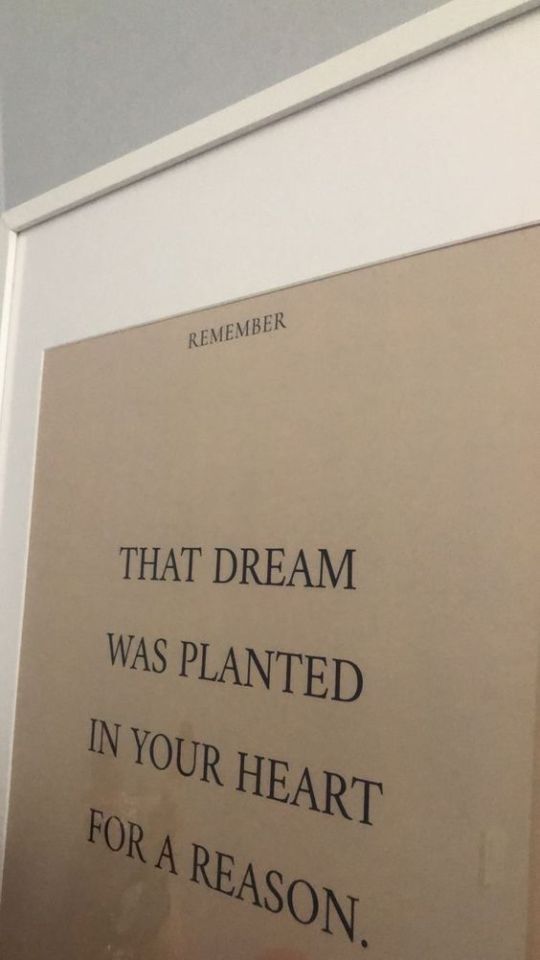


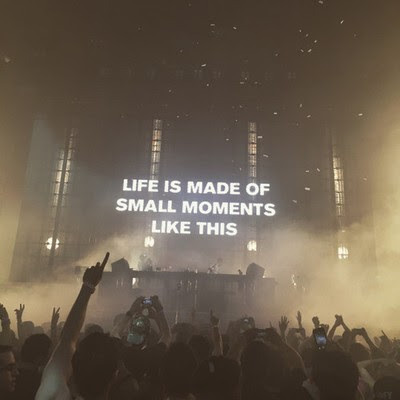

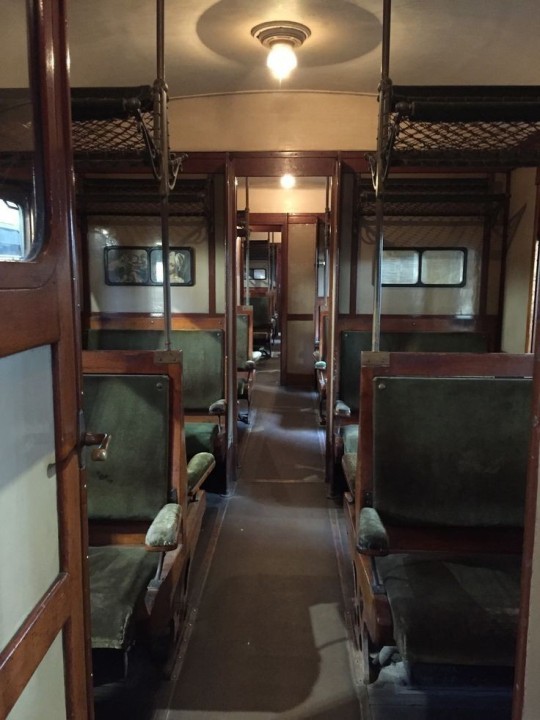

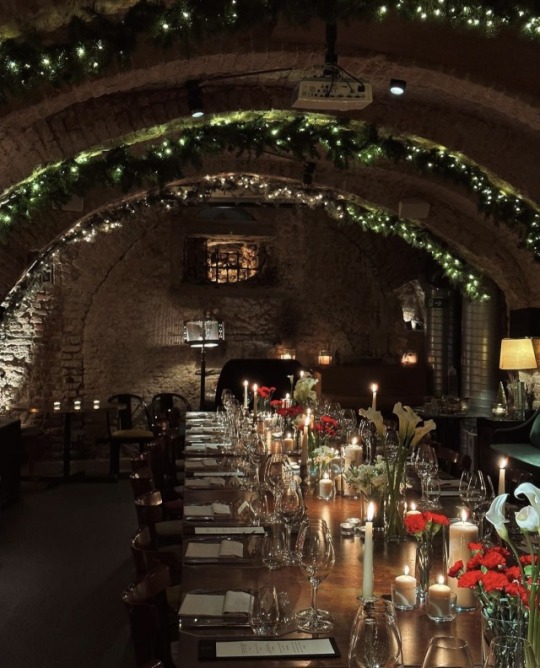
42 notes
·
View notes
Text
Anyone wanna drop me $500 so I can ask Don Bluth to draw June?
#I'm joking but god the temptation#I'm getting him to sign an ADGTH cel c:#jackal's journal#hold up lemme just ask this old Mormon guy to draw my very queer OC#if I had the money to spend I'd do it for the thrill of it
22 notes
·
View notes
Text
Film Journal #1: Steamboat Willie

Steamboat Willie (1928)
The 1920's truly was the golden age of animation, the birth of Mickey Mouse and his monumental first ever film debut began in Steamboat Willie (1928) directed by Walt Disney and Ub Werks. It was the first feature to be released with synchronized sound, it put the previous soundless animations all into dust when comparing. It started a new era of animated film - breaking Walt off from his rival studios and putting a big spotlight on his own name.
The film doesn't really have too linear of a plot, it essentially is Mickey going on a ship and playing animals as his instruments - creating a festival of sound and definitely...some interesting visuals! (choked geese included). Mickey's girlfriend Minnie is also included in this film, aiding him in creating the symphony of music on board the boat.
Audiences truly were stunned by the film when watching it for the first time in theaters. Sound revolutionized the game, and it had folks going haywire wanting more. It was so successful that it even had a rerun in one of the largest theaters The Roxy, which resides in the big apple, New York.
It was hand drawn on with paper, celluloids (transpararent sheets), and ink. "Characters were drawn on cels and superimposed on a fixed background image to reduce the number of reproductions necessary to produce an animation."
I genuinely really enjoyed the animation, I thought it was really fun and extremely well made! Even for its time, this was fantastical to see, the elements of sound and visuals blended perfectly. Also, seeing Mickey in his first film was super entertaining and interesting, seeing the subtle changes to his new evolved form. As well as finally seeing the intro to all the Disney movie's where they use the little whistling tune as an homage. Even for its time, I can't even imagine how they could fathom to create such a flowy, smooth film! I also just really enjoy the 1920's animation style in general. I think it mainly came from the aesthetic style I loved from the game Bendy and the Ink Machine, obviously it being heavily inspired from Disney's.
youtube

betty boop bonus!
2 notes
·
View notes
Text
okay i ran 2.5 miles at a faster average pace than last week’s long run, then walked a half mile and stretched for a bit after. i should work on editing this script but i simply don’t want to! instead i am spinning my wheels a bit doing research for this campus visit. i think i will journal a bit about it under the cut.
what i’ve done so far:
office-specific research. i did a deep dive into the office’s existing resources, programming, etc and took a bunch of notes. so far i’m really impressed. they seem to have extraordinarily robust community-engaged learning offerings with lots of resources dedicated to supporting faculty in developing CEL courses. definitely way more advanced than what my previous institution had! there’s quite a bit less available online about the specific division i’d be running which is interesting... i think one thing that’s still not totally clear to me is if/how my work would overlap with the director of community-engaged learning’s responsibilities. my initial guess is i’d be responsible for more of the scholarly and scientific research side of things, plus ‘creative projects’ (a category that also isn’t totally clear to me but i assume would include creative theses, etc). but i also would imagine i’d be working quite closely with the person who does community-engaged learning/research so i think it’s good to really immerse myself in researching the stuff she does too so i can talk with her about how we might work together.
school-specific research. i did a bunch of reading/note-taking on the college’s history, current strategic plan, and student demographics. felt really comfortable talking about this in the interview & the hiring director specifically commented at the end on how effectively i’d tied my vision to the college’s vision, so i think i am set on this front. will want to incorporate this into the faculty job talk but i don’t have the prompt yet so am good for now.
best practices in research mentorship. i did a bunch of writing about common challenges i’ve seen undergrad researchers face, and then also a bunch of fairly surface-level surveying research on best practices in advising undergrad researchers... just gathering up resources and citations to dig into further. i also did some writing/brainstorming about the types of resources and trainings i’ve always dreamed of creating for faculty (who can just be sooooo, SO bad at mentoring/advising). i’m a little torn on how much more time i need to spend on background research here. i think that maybe instead of doing a lot of reading, i should focus my time/energy on journaling a bit about my experiences with advising more traditional undergrad research projects (conference papers, posters, senior theses and capstones, journal articles, etc.) so i have some anecdotes ready to go. that journaling can also be a chance to dig into my own beliefs/values/priorities when it comes to mentoring undergrads. idk i think a lot of good mentorship is just common sense + good communication skills + having a thoughtful short- and long-range plan + focusing on fostering student self-sufficiency, but maybe i can do a bit more thinking about how i want to articulate that vision and how i would go about teaching/advising faculty. ooh and i guess i do want to brush up again on the research on cross-cultural and cross-racial mentoring practices - i did a bunch of reading in that area a couple years ago but it’s not super fresh in my mind.
programmatic assessment. i did some initial reading on various methods and tools for assessing program effectiveness... i will probably want to do more reading about this just so i feel really comfortable describing different tools i could use for gathering/analyzing data on program outcomes, but also i kinda feel like i know enough from my own experience + past research and i have many, many anecdotal examples of how i’ve used various kinds of data to improve courses and program structures. not too much more to do on this front at least for now. i guess the one thing i could do is try to dig up info about how the office currently assesses its own work.
first-gen student mentorship & program design. i revisited some of my past research/notes on working with first-gen students and bought a new book on designing programming with first-gen students in mind, which i’ll read/take notes on next week. it’s good to brush up on this stuff but idk i spent the last four years of my time at UT steeped in this research & in designing programming for a majority first-gen student program so i kinda feel like i can talk about this without much trouble. also a lot of the conventional wisdom on first-gen student stuff overlaps with what we know about high-impact learning practices for ALL students - like, good/effective pedagogy and inclusive, equity-focused pedagogy share almost all of the same core principles. i’m looking forward to reading that book because it has lots of case studies of real university programs and should be interesting, but i don’t think i need to be too stressed about speaking on this topic.
job talk prep. i don’t have the prompt yet so can’t do any real work here, but i made a list of core values/guiding principles that i want to convey directly or indirectly through the way i approach my presentation, and i also spent time thinking about the unique (?) qualities and experiences i bring to this position (ie things that might set me apart from other candidates or give me a different perspective on the work). i’m really really excited to get started on the presentation and i just hope they send me the prompt before i leave for asia so i can get most of it done at home and not on the road lol. i don’t know what the prompt will be but i’m hoping that it’s something that allows me to weave in examples of student work and maybe quotes from past students to illustrate my arguments and make my past work come alive in an engaging way! even though i’m nervous about this part (mostly because of the question marks here and the possible time crunch/stress), i’m also genuinely excited about it... i love public speaking so much and feel confident that i will rise to the challenge!!
specific examples/anecdotes from experience. i started generating a general list of compelling examples from my work with students that could be used to answer questions (or highlighted in some way in the job talk depending on the prompt). this is one area where i want to do quite a bit more prep work this weekend or early next week. specifically, i want to go back through all the lesson plans + resources i created for my last program (so that i have lots of specific examples of things i’ve done fresh in my mind). i also want to go back through and read through all of last year’s student portfolios + reflection letters and start gathering up specific quotes or details i could mention in my presentation.
okay!!! i think i’ve felt like i’ve been working in a kinda disorganized way but when i write it all out i can see that i’ve actually done quite a bit of substantive work (and have a decent plan for moving forward).
to distill that plan into concrete next steps:
read through all student portfolios, projects, and reflection letters, then create a document of key insights, quotes, and examples i want to cite
read through all lesson plans, professional development workshops, and project management tools i created for students over my last four years at UT, then create a document of key insights and examples
read the first-gen student programming book, take notes, then distill into specific takeaways i want to address
do some focused journaling to articulate 1) what effective undergrad research mentorship entails, 2) key evidence-informed best practices, 3) what institutional structures or tools support effective mentorship, and 4) how my vision overlaps with/builds on their existing programming
make a one-page doc (ideally by hand to help reinforce memory) where i list the major resources, tools, and programming they currently offer
#campus visit prep#sigh now i really do need to do Work work#i think i'll take a shower first then set a timer and just try to get in an hour of focused edits
1 note
·
View note